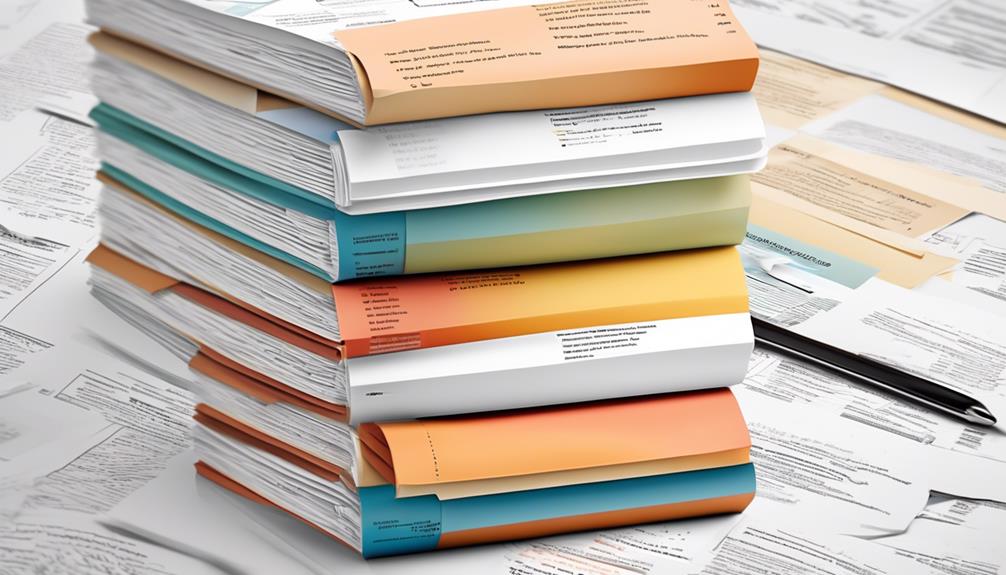When managing anger with BPD, it’s key to recognize that your feelings are valid and not a sign of weakness or shame. Practice grounding techniques like deep breathing, pause before reacting, and express your emotions calmly using “I” statements. Learning to identify triggers and responding with assertiveness helps you feel more in control. Over time, these skills build emotional safety and resilience. Keep exploring these strategies, and you’ll discover more ways to navigate anger without shame.
Key Takeaways
- Recognize anger as a normal emotional response, not a personal failure or sign of weakness.
- Use grounding and breathing techniques to pause and manage intense feelings without shame.
- Express anger constructively with “I” statements and assertive communication to promote understanding.
- Develop emotional regulation skills gradually, viewing setbacks as part of growth, not shameful mistakes.
- Validate your feelings and needs, understanding that anger signals underlying issues deserving compassion.

Have you ever wondered why people with borderline personality disorder (BPD) often experience intense anger? It’s not simply a matter of feeling upset; it’s a powerful emotion that can feel overwhelming and uncontrollable. BPD affects how you process emotions, and anger can flare up suddenly, often in response to perceived rejection or abandonment. This anger isn’t a sign of weakness or intentional hostility; it’s a symptom rooted in emotional dysregulation. Understanding this helps you see that your reactions are valid, even if they feel intense or confusing. Recognizing the origins of your anger is the first step toward managing it more effectively.
People with BPD often experience intense anger due to emotional dysregulation and perceived rejection or abandonment.
You might find that your anger often erupts in situations where you feel misunderstood, ignored, or betrayed. These feelings trigger a cascade of emotional pain that quickly spirals into rage. Instead of trying to suppress these feelings, which can backfire and make things worse, it’s more helpful to develop skills that allow you to process and express your anger constructively. One effective approach is to pause whenever you feel the heat rising. Taking a deep breath, counting to ten, or stepping away from the situation can create a buffer that prevents impulsive reactions. It’s not about avoiding your feelings but about giving yourself space to respond thoughtfully.
Another useful skill is to identify your physical signs of anger early on. Maybe your muscles tense, your heart races, or your face feels hot. When you notice these cues, you can remind yourself that your feelings are valid but don’t have to control your actions. Practice grounding techniques, like focusing on your breath or sensing your surroundings, to bring yourself back into the present moment. Over time, these habits help you feel more in control and less reactive. Additionally, understanding the history of pinball machines highlights how complex systems can evolve over time, similar to emotional growth and regulation.
Expressing anger without shame is essential. Once you’ve calmed down, try to communicate your feelings assertively rather than aggressively. Use “I” statements to express how you feel and what you need. For example, “I feel hurt when I’m ignored, and I need to be heard.” This approach shifts the focus from blame to understanding, which can foster healthier interactions. Remember, it’s okay to feel angry; what matters is how you handle that anger. Developing these skills takes time, patience, and practice, but they empower you to navigate your emotions without shame or guilt. With consistent effort, you’ll find that your anger becomes a signal for your needs rather than a source of shame or shameful outbursts.
Frequently Asked Questions
Can Anger Help Manage BPD Symptoms Temporarily?
Yes, anger can sometimes temporarily help you manage BPD symptoms by acting as a release valve for intense emotions. It might give you a sense of control or help you express feelings that feel overwhelming. However, relying on anger isn’t a healthy long-term strategy, as it can escalate issues or cause harm. Instead, learning healthier coping skills can provide more sustainable relief and emotional stability.
Are There Medications Specifically for Bpd-Related Anger?
Yes, there are medications that can help manage BPD-related anger. Your doctor might prescribe mood stabilizers like lamotrigine or antipsychotics such as aripiprazole to reduce emotional volatility. These medications don’t cure BPD but can help you control intense anger and mood swings more effectively. Always consult your healthcare provider before starting or changing medication to guarantee it’s tailored to your specific needs and to monitor side effects.
How Does Childhood Trauma Influence BPD Anger?
Childhood trauma deeply influences your BPD-related anger by shaping your emotional responses, altering your sense of safety, and fueling feelings of abandonment or betrayal. It creates a foundation where anger becomes a way to protect yourself, to assert control, or to cope with unresolved pain. Recognizing this connection helps you understand your reactions, empowering you to address underlying wounds and develop healthier ways to manage intense emotions.
Can Bpd-Related Anger Resolve Without Therapy?
Yes, BPD-related anger can improve without therapy, but it’s often challenging. You might notice some progress by practicing self-awareness, mindfulness, and grounding techniques daily. Building a strong support system, maintaining healthy routines, and learning to pause before reacting can also help. However, therapy provides essential tools and support that markedly accelerate your healing process. While improvement is possible on your own, professional guidance often makes the journey easier and more effective.
What Are Warning Signs of Anger Escalation in BPD?
You might notice warning signs like tense muscles, clenched fists, rapid breathing, or a flushed face signaling anger escalation. Your thoughts could race, feeling overwhelmed or fixated on perceived wrongs. You may also experience irritability, impatience, or a desire to lash out. Recognizing these signs early helps you pause and practice calming techniques, preventing the anger from spiraling further and giving you control over your reactions.
Conclusion
Remember, managing anger with BPD is like tending a fragile garden. You’ll face storms, but with the right skills, you can nurture your inner landscape, allowing new growth to flourish. Don’t be ashamed of the wild weather inside; it’s part of your unique tapestry. Embrace patience and compassion as your guiding stars, transforming turbulent moments into opportunities for resilience. Your journey is a delicate bloom—each step helps it reach towards the light.
Isla’s writings reflect a profound connection to the BPD community, offering solace and understanding to those who feel isolated by their struggles. Her articles explore the nuances of relationships, healing, and self-discovery, all through the lens of BPD. Isla’s compassionate approach to storytelling encourages readers to embrace their journey with hope and resilience.










